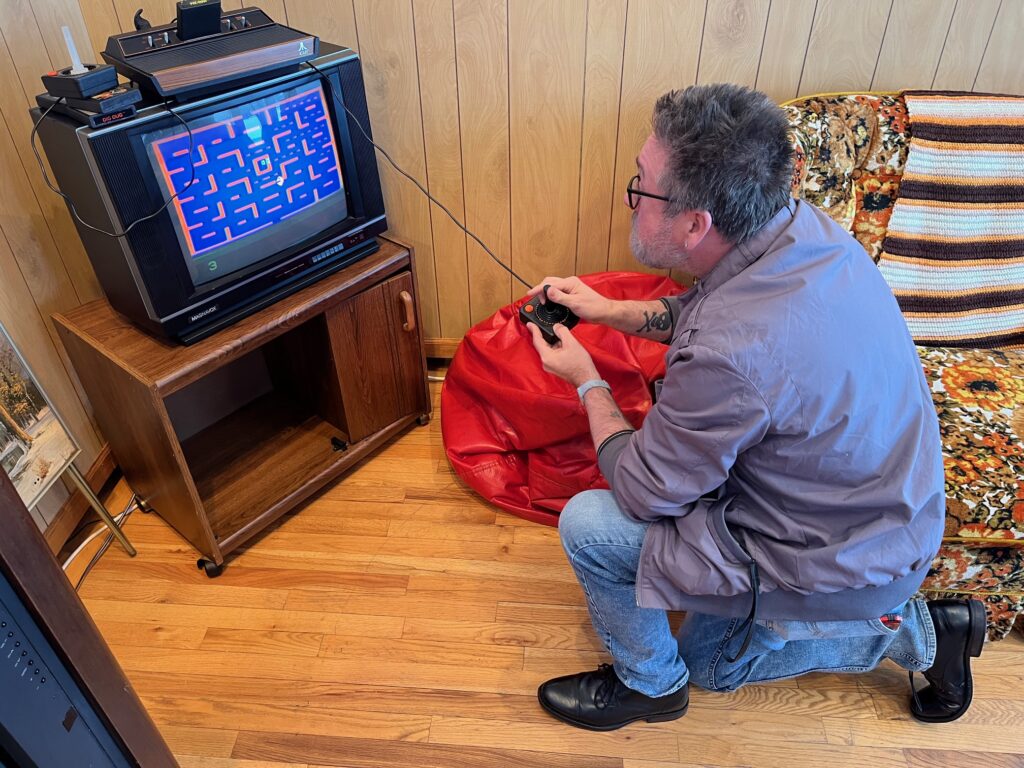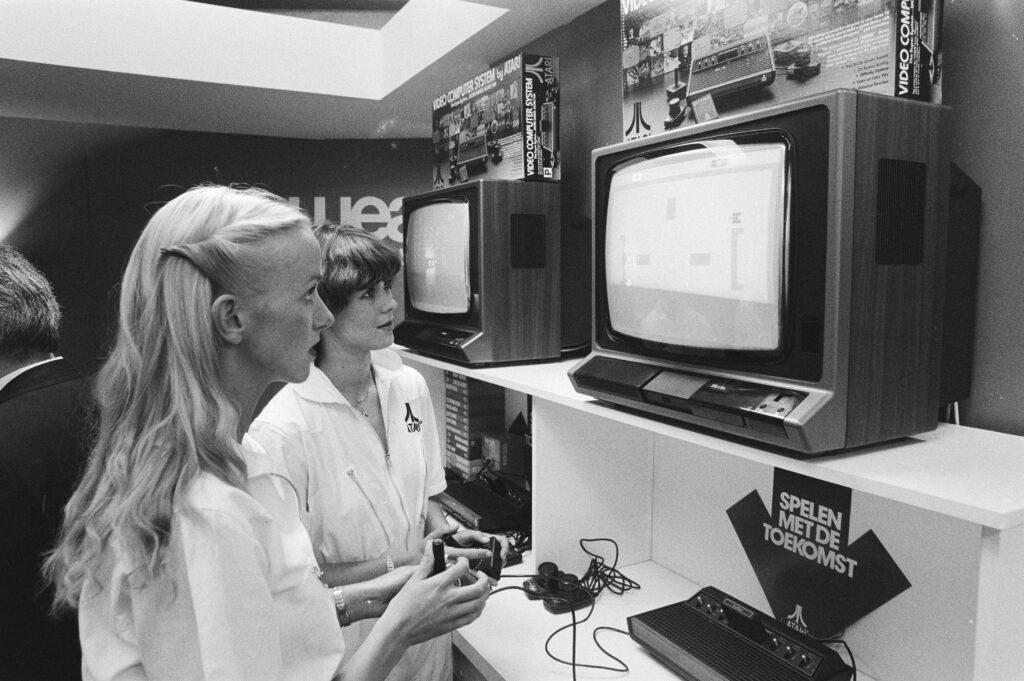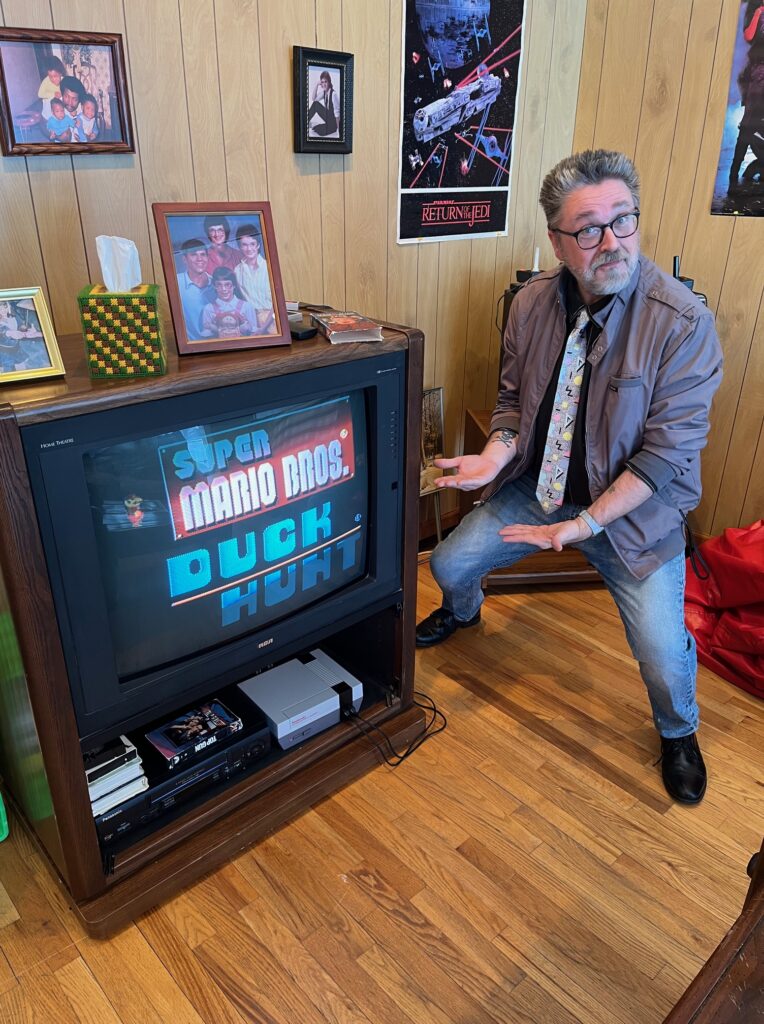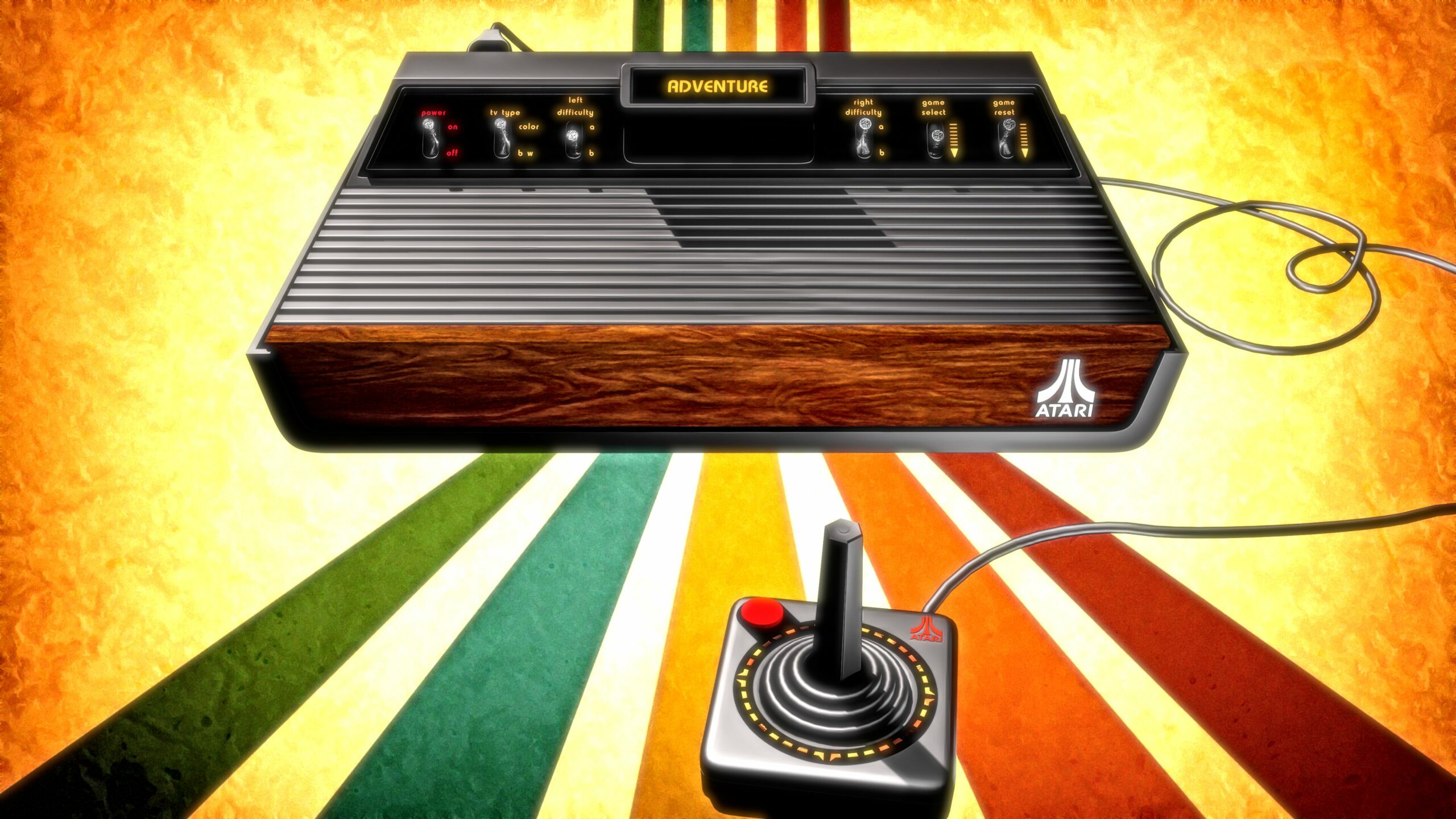Is the Atari 2600 nostalgic joy? Did this game console change an industry? Did it affect our culture in ways we did not think about? Oh god yes!
Finding My Heart Losing the Keyboard and Grabbing a Joystick

I had to stop writing and play some pac-man and pitfall to find my soul for this piece.
Nothing I wrote for three hours made the final cut of this article.
Like Atari’s ET, I had to trash what I made into a digital landfill before I killed wonder.
I dove into a different rabbit hole away from the tech and into the larger picture.
Why does this 8 bit device matter to us? Did we forget that Pac Man can only point his mouth left and right? In Adventure you were literally a square dot! Did we forget that if you played games like track and field your arm would get sore and you would literally get blisters from the controller?
I don’t think we forgot. But I do think we may not have realized how much changed because of this 8-bit wonder that still ripples into today’s world. Maybe that is because we were too busy having fun.
By today’s standards, of course this was not gaming like we know it today. The adventures were short, there was limited backstory, if any. You were just Pitfall Harry running about a jungle jumping over scorpions or a dot running away from dragons that look like ducks. Maybe Pac Man’s mouth did not go up or down, but it did not cost a quarter. Your cousin had Intellivision, but you had friends over playing Defender while you ate microwave fries. It was fun and we had no knowledge of cheat codes or 100%ing or having to endure a pervert online while destroying AT-AT’s.
And while we had fun, everything changed because of it.
From the Bar to the Livingroom to the Arcade

In the 70’s and beginning of the 80s, the few video games we had were mostly found in bars. Gen X was not old enough to drink and some Boomers enjoyed the novelty of the video game, but did not have the same obsession and connection we, and other generations would have. But the late 70’s this amazing device would enter more and more homes until it become the most popular game system by 1982.
2 joysticks, 2 paddles, and endless possibilities by switching a cartridge. This was not the first home system, but it was the most interesting to Generation X. The video game industry realized quickly that the Gen X kids were the target market for the quarters of America. The video games left the pubs and went to where we were and we did not need to be 21 to enter.
Arcades, 7-11, and any place that wanted kids spending their allowance money.
Innovations and Limitations

Adventure is the greatest example of how limitations led to innovations that affected us. Even if you have never played it, the plot will sound familiar. A magical chalice has been stolen. You, as the brave adventurer will have to grab your sword and delve into a labyrinth discovering keys and surviving 3 dragons and a bat. Each of these enemies have different personalities and abilities. You will have to survive them, recover the chalice, and get it back to the castle!
The graphics were rudimentary to allow the computing resources to have a larger and more interactive experience. The competition this game was facing was text based adventures that were very popular with the early home computing world. In the development of the game the lack of keyboard and text entry was considered a limitation, so they had to innovate.
The dragons would sometimes chase you from room to room and if you did lose the dragon, even when it was not visible to you it was exploring and would not be in the last room you were in. The NPC was born.
You had a joystick and one button, but the game creators wanted you to be able to interact with this world they designed. Move over a thing and press a button and you suddenly had a sword or a key. If you got encumbered and needed another thing, you had to put it down. One of the best ways to kill a dragon was to drop the sword in the dragon’s path so it would impale itself. Even today with VR headsets on we see power ups, health packs, keys, and so many other conventions that started to overcome limitations.
Innovation Thrives in Limitations
As more advanced systems like Intellivision, ColecoVision, and the Commodore 64 came out, Atari held on to the number one spot with leaning into innovation from a space of limitation. The question they were often answering with each new game release was simple. What haven’t we tried to make it do yet?
From that question came games like Pitfall, Combat, Empire Strikes Back, and others. They pushed the envelope of every bit of processor and memory with creative and addictive twists. Art is not about the greatest tools and largest budgets, it is about passion and creativity.
The Boardroom Can Be a Middleman or a Gatekeeper
I am not an anti capitalist. But I do think we give the boardroom too much power and they betray the trust of the people too often. And that is shown most profoundly in anything that has a fan base.
The Fem Friday articles have a common theme. The fans want Joan Jett, the Go-Go’s, Blondie, and other women. The people who find these voices important see freedom and hope and the men like me who enjoy it find diversity and discovery of new ideas while having fun.
But time and time again gatekeepers think they know “what the kids want” without actually listening to them. In music, since the time of the troubadour, it has always been about the connection between the artist and the people. When the powerbrokers first discover that connection they do right. They look at the trends and find ways to enhance that connection. Everyone is happy. The powerbrokers are making money, the artists are making money, and the people are buying what they want and finding joy. But then, they stop listening and try to control the narrative, the creators, and the consumers. The creators makes less and the public gets less. Then people get laid off.
It is a cycle that has almost killed so many beautiful things so many times.
The End Was a Pause

A lot of people blame the game based on the hit movie, E.T. The Extraterrestrial for the downfall. It was the climax of a symptom. The innovations that were this amazing bridge between tech and user and culture and art gave way to licensing deals, impossible deadlines, and more investment into marketing and production than innovation and exploration.
Game quality had been slipping and the people least qualified to decide what should be released next and when were the ones making the decisions. In the arts this is nothing new. When art becomes product the artists in the studio have less say than the boardroom and the investors do.
The creator of the video game ET had 5 weeks to make it and less than 2 days to come up with the vision for the game that he would have to stick with. The game was horrible and in less than a year after releasing the industry would seemingly die.
But it did not die, obviously. There was a pause. In that pause we would see the envelope pushed again. Innovation and ideas would capture our imagination again when Nintendo released the Nintendo Entertainment System.
It would not only innovate new ideas, but it would use some of the conventions from the 2600 and even introduce us to an old friend, Mario.
But that is a story for another day.
Support Gen X Watch!
We rely on readers like you to continue our work. A few moments and you can make a difference:

1. Share this story with a friend and leave a comment.

2. Tip me! I need your support!
3. Become a Members Only Patreon! In the Patreon I will have unfiltered rants, exclusive content, free PDF copies of the upcoming quarterly magazine, and more.
4. Go to our store and buy the print magazine! It is art, news, and nostalgia that matters!
Thank you for your support and taking the time to read this.
Stay Totally Awesome! Stay true to you!

Leave a Reply